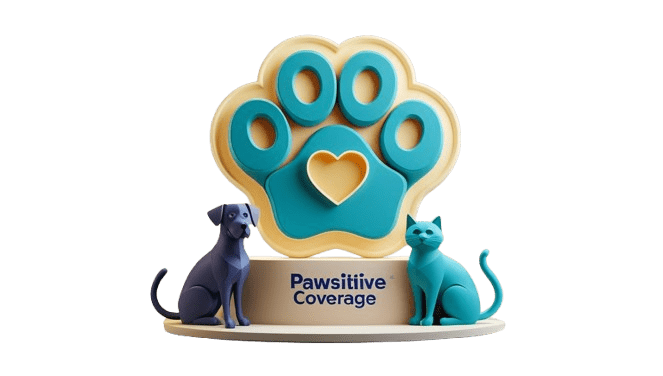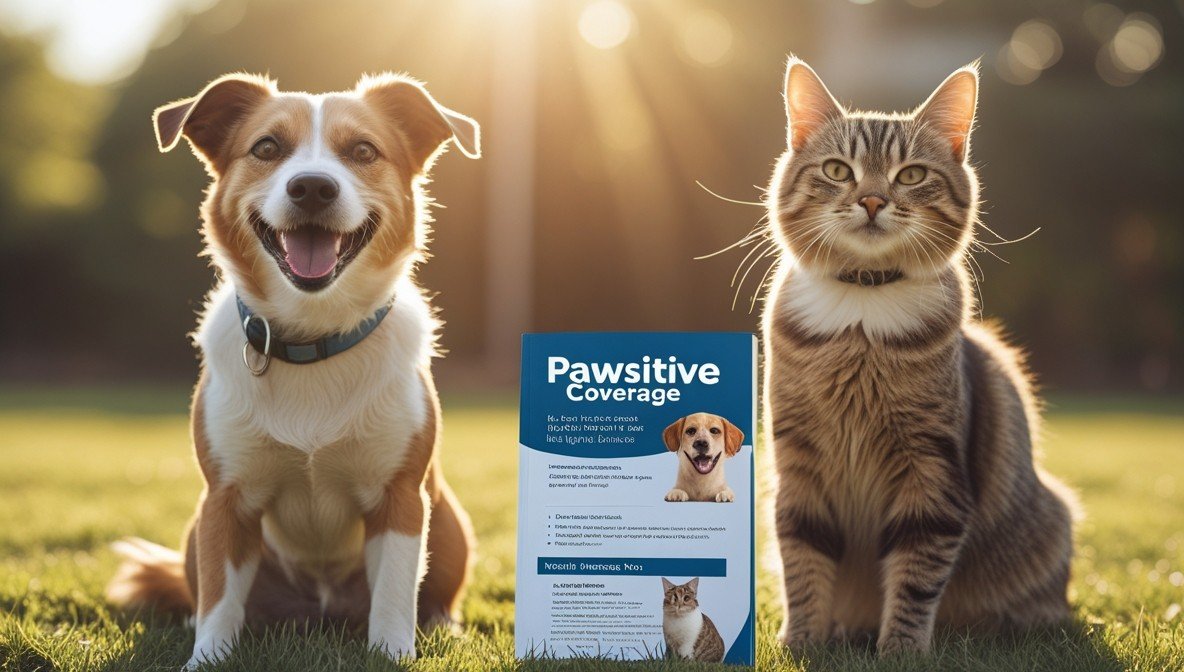Hey there, fellow pet lover! I’m Michael Brooks, and my rambunctious rescue dog, Luna, is the reason Pawsitive Coverage exists. A few years back, Luna’s wild chase after a squirrel landed us with a heart-stopping $3,000 vet bill for emergency surgery. That moment flipped a switch in me—pet insurance went from “nice to have” to “must have.” But here’s the kicker: picking the right plan felt like decoding a secret language. At Pawsitive Coverage, we’re not insurers; we’re your guide, helping U.S. pet parents like you navigate the maze of pet insurance options. Through Luna’s antics and my own fumbles, I’ve learned a ton about how to choose a pet insurance plan. Let’s dive into this journey together, blending dog park wisdom with practical steps to find the perfect plan for your furry friend.
Why Pet Insurance Is a Game-Changer
How to choose a pet insurance plan :The Cost of Unpreparedness
Luna’s squirrel-chasing saga wasn’t just a scare—it was a financial wake-up call. Vet bills can sneak up fast, and without insurance, you’re on the hook for every cent. In 2023, U.S. pet owners spent $136.8 billion on their pets, with vet care taking a massive slice, per the American Pet Products Association. A good pet insurance plan can cover 70-90% of unexpected costs, but picking the wrong one? That’s like buying a leash that snaps. Knowing how to choose a pet insurance plan means securing peace of mind, not just your wallet.
Your Pet’s Safety Net
Insurance isn’t about expecting the worst—it’s about being ready for it. Whether it’s a broken leg or a sudden illness, the right plan ensures your pet gets care without you sweating the bill. Let’s explore how to match a plan to your pet’s unique needs.
How to choose a pet insurance plan: Know Your Pet’s World
Age and Breed Matter
When I adopted Luna, she was a two-year-old bundle of energy, no health worries in sight. Now at six, she’s starting to slow down, and I’m eyeing plans that cover age-related issues like arthritis. Older pets need beefier coverage for chronic conditions, while puppies might skate by with less. Breed plays a role too—Luna’s part-Lab mix means joint issues could pop up, unlike, say, a Siamese cat prone to dental troubles.
- Do This: List your pet’s age and breed. Check sites like the American Kennel Club for breed-specific health risks to guide your coverage choices.
How to choose a pet insurance plan: Lifestyle: Wild or Mild?
Luna’s a tornado—leaping over fences, sniffing out trouble. Her high-energy antics scream “accident coverage needed!” But my neighbor’s cat, Whiskers, who lounges on the windowsill all day? He’s more likely to need illness protection than emergency stitches. Your pet’s lifestyle shapes the plan you pick.

- Do This: Think about your pet’s daily vibe. Active adventurers need accident-heavy plans; chill companions might prioritize illness or wellness coverage.
How to choose a pet insurance plan:Digging Into Coverage Options
Accident-Only vs. Comprehensive Plans
Post-Luna’s surgery, I flirted with an accident-only plan—cheap and focused on emergencies. But then I imagined her facing allergies or a tumor later on. Comprehensive plans cover both accidents and illnesses, offering a wider safety net. They cost more, but they’re worth it for the long haul.
- Tip: If your budget’s tight, accident-only works. Got wiggle room? Comprehensive is your best bet for all-around protection.
How to choose a pet insurance plan:Wellness Add-Ons: Yay or Nay?
Wellness add-ons for things like vaccines or checkups sounded fancy until Luna’s $200 annual exam hit. They can smooth out routine costs, but I found budgeting separately worked better for me. It depends on how you handle predictable expenses.
- Tip: Love the ease of covered checkups? Grab a wellness add-on. Good at saving? Skip it and stash cash instead.
Need help budgeting for vet visits? Our Pet Finances guide has you covered.
How to choose a pet insurance plan:Breaking Down the Costs
Premiums, Deductibles, and Reimbursements
Here’s the money talk that saved me with Luna:
- Premiums: Monthly costs—$40-$70 for dogs, $20-$40 for cats. Luna’s $52/month fits my budget.
- Deductibles: What you pay before coverage starts. I picked $300—manageable but keeps premiums down.
- Reimbursement Rates: Plans pay back 70-90%. My 80% rate slashed Luna’s bill big-time.
- Try This: Use a tool like PetInsurance.com’s calculator to mix and match these for your wallet.
Exclusions and Waiting Periods
Every plan’s got fine print. Pre-existing conditions, like Luna’s old limp, are usually off-limits. Waiting periods—2-5 days for accidents, 14 days for illnesses—are standard. One plan I nearly chose had a 6-month wait for joint issues, which would’ve been a nightmare for Luna.

- Try This: Read the policy like a detective. Spot exclusions early to avoid surprises.
Making the Smart Choice
Reviews and Real Talk
Before I locked in Luna’s plan, I scoured reviews and chatted with dog park pals. Sites like Consumer Reports break down providers with no fluff, and pet forums spill real experiences—fast claims or headaches. It helped me pick a plan with a 4.7-star rating and quick payouts.
- Do This: Hunt for high-rated providers with solid customer service. Real stories beat sales pitches.
Your Budget, Your Risk
I’m a worrier—Luna’s $3,000 bill scarred me—so I went for a lower deductible and higher reimbursement, even if it bumps the premium. If you’ve got savings or a higher risk tolerance, a bigger deductible might cut costs. It’s about what lets you sleep at night.
- Do This: Ask: Can I handle a $1,500 bill today? If not, lean toward more coverage.
Want to hear from other pet parents? Check out our Pet Stories community for real-life wins.
FAQ: Your Pet Insurance Questions Answered
What’s the most important factor when choosing a pet insurance plan?
Your pet’s needs—age, breed, lifestyle—plus a plan that fits your budget and covers what matters most to you.
How much does pet insurance cost for dogs and cats?
Dog plans average $40-$70/month; cats run $20-$40. Costs vary by pet age, breed, and plan type.
Should I get an accident-only or comprehensive plan?
Accident-only is cheaper but limited; comprehensive covers accidents and illnesses for broader protection.
Do pet insurance plans cover pre-existing conditions?
No, pre-existing conditions are typically excluded. Enroll early to maximize coverage.
How do I file a claim with pet insurance?
Pay the vet, submit your invoice and records, and get reimbursed—usually within 7-14 days.
Join Luna’s Crew: Share Your Story!
Luna’s squirrel chase was a wild ride, but it led me to a plan that’s got her back. What’s your pet insurance story? Download our free Pet Insurance Checklist by emailing hello@pawsitivecoverage.com or hitting our Get in Touch page. It’s loaded with questions to ask providers—perfect for busy pet parents. Share your insurance journey, and we might feature it in our Pet Stories! Got questions? We’re here—expect a reply within 24-48 hours. At Pawsitive Coverage, Luna’s lessons light the way to worry-free pet parenting.
You can also read this

